Occupational Safety Training for the 3D Printing Industry
99,000 ₫
Note: The above price is calculated per person and may vary depending on the number of participants in the course and market fluctuations. For more accurate pricing support, please refer to the price list or contact our consulting staff directly.
The 3D printing industry Occupational Safety Training course is a course that provides knowledge on Group 3 occupational safety. The course will raise awareness among participants on how to prevent workplace accidents during work. Accordingly, the occupational safety training content is closely based on Article 18 Decree 44/2016/ND-CP.
Table of Contents
Toggle1. Overview of the 3D Printing Industry
a. What is the 3D printing industry?
The 3D printing industry, also known as three-dimensional printing, is an emerging technical field in which objects are created by stacking layers of material one by one using 3D printing technologies. Instead of using traditional methods to produce products from molds or cutting from large materials, 3D printing allows the creation of complex objects by printing successive layers of material according to digital designs.
3D printing technology typically uses 3D printers to create objects from 3D model files generated by design software or scanned from an existing object. The 3D printing process starts by dividing the object into thin layers, and then the 3D printer creates the object by printing each layer until completion.
The 3D printing industry has wide-ranging applications across various fields, including manufacturing, healthcare, art, architecture, and education. It enables the production of customized products, prototypes, machine parts, and many other applications that were previously difficult or time-consuming to achieve with traditional methods.

b. Types of machinery in the 3D printing industry
The 3D printing industry uses a range of machines to carry out the printing process and create 3D objects. Here are some common types of machinery used in 3D printing:
- FDM 3D printers (Fused Deposition Modeling): This is the most common 3D printing technology, often used for home and office applications. FDM printers use a thermoplastic filament that is melted and deposited layer by layer to create a 3D object.
- SLA 3D printers (Stereolithography): SLA technology uses light to harden a special liquid, usually photopolymer resin. SLA printers use a light-blocking window to create each layer of a 3D object by projecting light onto the liquid.
- SLS 3D printers (Selective Laser Sintering): SLS technology uses a laser to melt and fuse material particles, usually plastic or metal powder. SLS printers create 3D objects by melting and bonding layers of powder or particle material.
- DLP 3D printers (Digital Light Processing): DLP technology is similar to SLA, but uses a projector to shine light through a layer of photopolymer resin, curing the layer and forming each layer of the 3D object.

c. Typical 3D printing companies in Vietnam
Some notable 3D printing companies in Vietnam include:
- Fablab Saigon: Fablab Saigon is a creative development and prototyping workshop providing 3D printing services for businesses and individuals. They also organize training courses and events related to 3D printing and other creative technologies.
- An Ninh Mang: An Ninh Mang Company offers 3D printing and prototyping solutions for businesses, organizations, and individuals. They also provide consulting and customized solutions in the field of 3D printing.
- Makerspace Vietnam: Makerspace Vietnam is a creative community and fabrication workshop based in Hanoi. They provide 3D printing and prototyping services for clients and also host courses and events about 3D printing and other creative technologies.
- ProTech Innovation: ProTech Innovation specializes in 3D printing and digital manufacturing technology. They offer high-quality 3D printing services for various fields such as healthcare, education, architecture, and industry. They also provide consulting and custom prototyping solutions.
- Sovico 3D: Sovico 3D specializes in 3D printing and prototyping services in Vietnam, providing 3D printing for companies and individuals in industries such as healthcare, manufacturing, art, and advertising.

d. Specific jobs in the 3D printing industry
In the 3D printing industry, there are various specific jobs and roles. Some common jobs include:
- 3D Printing Engineer: Responsible for designing, programming, and operating 3D printers. They must understand 3D printing technologies, analyze client requirements, and create suitable 3D models for printing.
- 3D Design Engineer: Creates 3D models using 3D design software such as AutoCAD, SolidWorks, or Blender. They produce accurate and optimized models to ensure successful 3D printing.
- 3D Printing Technician: Operates the 3D printing process, prepares printers, selects materials, processes model files, and monitors printing to ensure quality output.
- 3D Finishing Technician: Responsible for cleaning, smoothing, and finishing 3D-printed parts or products. Techniques may include sanding, polishing, painting, or applying protective coatings.
- 3D Printer Maintenance Technician: Performs maintenance, repair, and upgrades on 3D printers. They ensure stable operation and optimal performance of the machines.
- 3D Application Specialist: Explores and develops new applications for 3D printing in fields such as healthcare, manufacturing, art, and education, providing creative solutions and client consulting.
e. Products in the industrial 3D printing sector
In industrial 3D printing, many products are created using 3D printing technology for various industries. Some common products include:
- Machine parts and components: 3D printing allows precise creation of complex and customized machine parts used in manufacturing, automotive, aerospace, and other industries.
- Prototypes and test models: 3D printing offers a fast and cost-effective way to produce prototypes and test models, enabling businesses to evaluate designs before mass production.
- Tools and molds: 3D printing enables the creation of tools, molds, and single-use or short-term instruments for manufacturing processes, increasing flexibility and efficiency.
- Jewelry and art: 3D printing allows the creation of unique jewelry designs and intricate artworks. Designers can produce custom jewelry and creative art pieces using 3D printing.
- Medical and healthcare components: 3D printing has significant potential in healthcare, allowing the production of custom medical parts, implants, and complex structures for medical research, replacement parts, and health care support.
- Architecture and construction: 3D printing enables the creation of architectural models and simulations in construction. These models assist in design validation, spatial assessment, and prototyping complex structures before actual construction.
2. Overview of occupational safety training in the 3D printing industry
a. What is 3D printing industry occupational safety training?
- Occupational safety training in the 3D printing industry consists of sessions that equip workers with awareness on accident prevention. Workers directly involved in the 3D printing industry belong to group 3.
- The training course helps workers recognize and prevent hazards, reducing the risks of workplace accidents during their work.
REGISTER FOR OCCUPATIONAL SAFETY TRAINING
b. Training duration
Initial occupational safety training:
- Total training time is at least 24 hours, including testing time.
- 8 hours of theory on policies and laws on occupational safety and hygiene
- 8 hours of theory on basic knowledge of occupational safety and hygiene
- 4 hours of theory on specialized training content
- 2 hours of practical exercises on specialized training content
- 2 hours of theoretical examination at the end of the course
The training center will divide the schedule into multiple sessions depending on the availability of workers. Typically, there will be 6 sessions over 3 days, provided the company can arrange continuous learning time.
Periodic occupational safety training:
- Before the occupational safety card expires, workers must undergo periodic occupational safety training with a duration of at least 50% of the initial training time.
Explanation: the total time for periodic occupational safety training is at least 12 hours, including testing. After completing the course and passing the exam, workers will have their occupational safety card renewed.
c. Training course content
| No. | TRAINING CONTENT | TRAINING TIME (HOURS) | |||
| Total | Including | ||||
| Theory | Practice | Test | |||
| I | Policies and laws on occupational safety and hygiene | 8 | 8 | 0 | 0 |
| 1 | Overview of the system of legal documents on occupational safety and hygiene. | 6 | 6 | ||
| 2 | Standards and technical regulations on occupational safety and hygiene. | 1 | 1 | ||
| 3 | Specific regulations from state management agencies on occupational safety and hygiene when constructing, expanding, or renovating facilities, using, storing, or inspecting machinery, equipment, materials with strict safety requirements. | 1 | 1 | ||
| II | Basic knowledge of occupational safety and hygiene | 8 | 8 | 0 | 0 |
| 1 | Basic knowledge about hazardous and harmful factors at the workplace. | 4 | 4 | ||
| 2 | Methods to improve working conditions. | 1 | 1 | ||
| 3 | Safety culture in production and business. | 1 | 1 | ||
| 4 | Rights and obligations of employers and employees; safety and hygiene policies and regulations for employees; functions and responsibilities of the safety network. | 1 | 1 | ||
| 5 | Safety and hygiene rules, signs, instructions, use of safety equipment, personal protective equipment; first aid skills for occupational accidents, prevention of occupational diseases. | 1 | 1 | ||
| III | Specialized training content | 6 | 4 | 2 | 0 |
| Comprehensive knowledge of machines, equipment, hazardous substances; analysis, risk assessment, safety management, safe working procedures with machines, equipment, and materials requiring strict occupational safety standards. | 6 | 4 | 2 | ||
| IV | Occupational safety test at the end of the training course | 2 | 2 | 0 | 0 |
| Total | 24 | 22 | 2 | ||
See more training content of the 6 groups
d. Occupational safety card
After completing the occupational safety training and passing the test, workers will be issued a safety card (commonly called a group 3 occupational safety certificate).
The group 3 safety card shows details such as name, date of birth, specific job and work environment, training duration, official stamp, and signature confirming course completion.
According to regulations on issuing safety cards stated in Clause 2 of Article 24 of Decree 44/2016/ND-CP, there are two cases:
- If the employer and employee have a labor contract, the employer must stamp and endorse the safety card for the group 3 worker after completing training at the occupational safety training unit and passing the exam.
- If the worker is freelance or temporary and does not have a labor contract, the training unit must stamp and endorse the safety card for the worker after completing the occupational safety training and passing the exam.

3. Identifying Hazards for Workers in the 3D Printing Industry
The 3D printing industry presents several potential hazards for workers. Here are some common hazards that need to be identified and managed in 3D printing:
- Printing materials: Some 3D printing materials, such as thermoplastics (PLA, ABS) or other harmful plastics, may release toxic or allergenic gases when melted or used. Prolonged exposure to these materials can harm the respiratory system and skin. It is essential to use safe materials and ensure proper ventilation during printing.
- Dust and fumes: The 3D printing process can generate dust and fumes from the printing materials, especially during cutting, sanding, or finishing 3D printed products. These dust and fumes can irritate the respiratory system and eyes. Using protective equipment such as masks, safety goggles, and effective ventilation systems is necessary to protect workers’ health.
- Temperature and electrical safety: During 3D printing, printers can generate high temperatures and involve electrical components. Workers must ensure safe operation and supervision of the printing process to avoid burns or electrical hazards.
- Noise: Some 3D printers produce noise during operation, especially when printing large products or moving parts. Noise can cause stress and affect workers’ hearing. Ear protection and compliance with workplace noise regulations are required.
- Work safety and risk management: The 3D printing industry must comply with occupational safety regulations and risk management practices, such as maintaining a safe workspace, arranging materials and machinery safely, and training workers on safety procedures and appropriate personal protective equipment (PPE).
4. Safety Measures for Workers in the 3D Printing Industry
Safety measures are crucial to protect the health and safety of workers in 3D printing. The following safety measures should be implemented:
- Occupational safety training: Provide training for all employees involved in the 3D printing process. Ensure that workers understand potential hazards, safety procedures, use of PPE, and response measures in case of incidents.
- Use of personal protective equipment (PPE): Ensure that workers are fully equipped and properly use PPE such as masks, safety goggles, gloves, ear protection, and protective clothing. Proper PPE helps protect against dust, fumes, noise, and other physical hazards.
- Material management: Use safe 3D printing materials that do not harm health. Read and follow manufacturer safety instructions for material use and handling. Limit exposure to hazardous materials and ensure proper ventilation in the workspace.
- Printing process management: Conduct 3D printing in a safe environment. Ensure printers and related equipment are installed correctly and operate safely. Regularly inspect and maintain machinery to prevent fire hazards or electrical shocks.
- Auxiliary material management: Manage auxiliary materials such as solvents, adhesives, or chemicals used during 3D product finishing. Ensure proper use, safe storage, and compliance with handling and disposal instructions.
- Noise risk management: Assess and control noise levels in the workspace. Ensure workers use appropriate ear protection and implement noise control measures, such as sound isolation or noise reduction devices.
- Safe workspace organization: Arrange the workspace to be clean, organized, and safe. Remove unnecessary materials, ensure safe walkways, provide adequate working and movement space, and follow safety rules for the work area.
- Periodically organize occupational environment monitoring in factories, collect and analyze harmful factors for workers, and adjust measures to reduce risks and prevent occupational diseases.

5. Benefits of Occupational Safety Training in 3D Printing
An Toan Nam Viet provides enterprises with the following benefits upon completing occupational safety training courses in compliance with Decree 44/2016/ND – CP on occupational safety and hygiene:
- Workers can recognize potential workplace hazards and take preventive measures to avoid accidents.
- Enterprises can establish risk prevention measures in production, operation, and maintenance processes.
- Reduce costs associated with potential workplace hazards.
- Uninterrupted production improves labor productivity and product quality.
- Compliance with occupational safety laws, reducing legal risks.
- Enhances credibility and professionalism, elevating the enterprise’s brand.
Nam Viet’s training courses provide solutions to mitigate external risks, enabling workers to avoid hazards that could result in injury or even death.
REGISTER FOR OCCUPATIONAL SAFETY TRAINING SERVICE
6. Customer Feedback After Completing Training
An Toan Nam Viet has many years of experience collaborating with enterprises in Vietnam, especially in the southern provinces. This responsibility is highly valued, which is why our Occupational Safety Training is increasingly professional. The motivation behind our growth comes from positive feedback and constructive suggestions from enterprises. Below are testimonials from our clients.
See more customer interviews after using the service from An Toan Nam Viet
7. Occupational Safety Training Capability of An Toan Nam Viet
An Toan Nam Viet is a reputable and high-quality occupational safety training center in Vietnam. Training sessions are conducted continuously at workshops, factories, and construction sites nationwide (all 63 provinces in Vietnam).
REGISTER FOR OCCUPATIONAL SAFETY TRAINING SERVICE
Occupational safety training certification
- An Toan Nam Viet has been inspected and certified by the Department of Safety under the Ministry of Labor, Invalids, and Social Affairs, granting the certification for occupational safety and hygiene training, reinforcing our training capabilities.

Training materials and lectures
- Before being used in occupational safety training courses, all materials are reviewed to ensure accurate knowledge and effective learning outcomes.
- Instructors follow An Toan Nam Viet’s teaching standards, applying methods developed by occupational safety experts to maximize knowledge absorption for trainees.
Facilities
- Controlling classroom factors affecting training improves teaching efficiency and trainee learning outcomes.
- Our training facilities provide spacious classrooms with standard lighting, training equipment, and other necessary arrangements.
8. Nationwide Reputable Occupational Safety Training Center
At An Toan Nam Viet, we prioritize occupational safety training. Educating workers on self-protection equips them with safety skills while contributing to national development.
To ensure effective training, we meticulously prepare tools, teaching equipment, curricula, materials, sound, and lighting.
Our instructors are experts with years of experience, including research on identifying hazards across industries and prevention methods.
Lectures are practical and engaging, making it easy for workers to understand. Knowledge aligns with Decree 44/2016/ND-CP.
Workers learn preventive measures and self-protection, applying them appropriately in real work situations.
Our training center is proud to provide professional occupational safety training with the following advantages:
- Competitive training costs while maintaining quality.
- Flexible training schedules aligned with company production.
- Fast and compliant certification procedures.
- Experienced instructors with years of expertise.
- Classrooms designed for optimal training efficiency and knowledge absorption.
- Lectures tailored to occupational safety in enterprises.
- An Toan Nam Viet provides dedicated, professional support to clients efficiently and accurately.

9. Additional References for 3D Printing Occupational Safety Training
1 review for Occupational Safety Training for the 3D Printing Industry
No comments yet

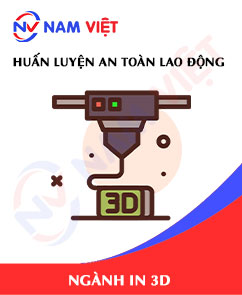

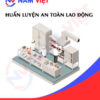




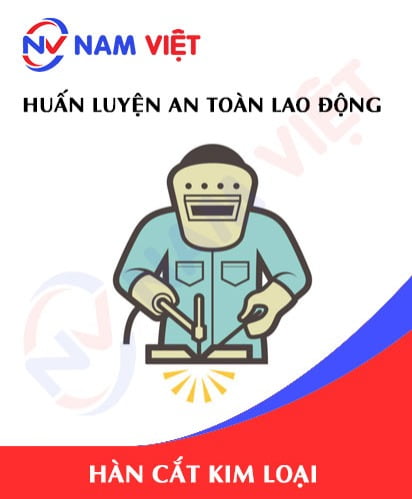
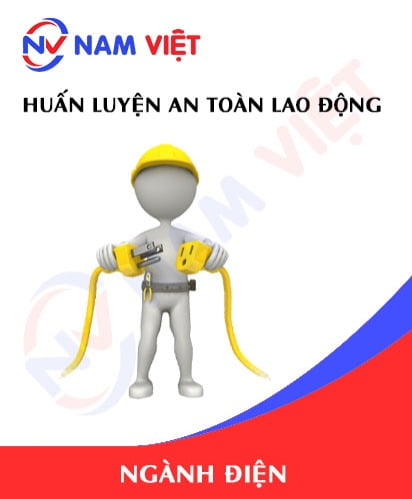



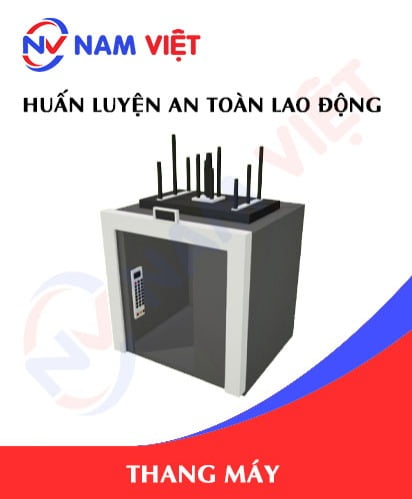

caotiensyhung.07081999
trung tâm ok